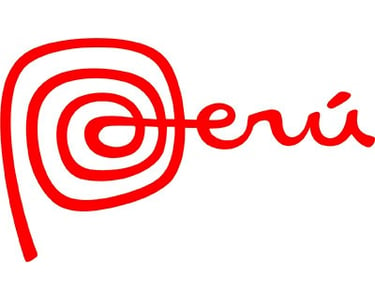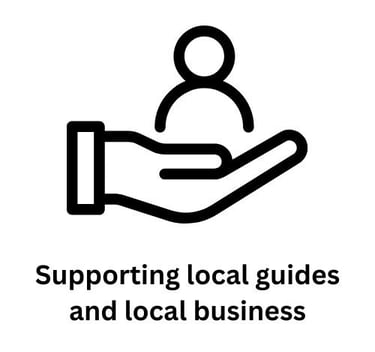Festivals in Peru: The 20+ Most Amazing Celebrations You’ve Never Heard Of (and a Few You Have)
From sacred rituals to all-night street parties—here’s your ultimate guide to Peru’s most unforgettable festivals.


Peru isn’t just a land of ancient ruins and dramatic landscapes—it’s also one of the most vibrant countries on Earth when it comes to festivals. With over 3,000 celebrations held throughout the year, the Peruvian calendar is packed with color, music, mysticism, and dancing. Many festivals blend Catholic tradition with Indigenous heritage, resulting in cultural expressions found nowhere else.
In this comprehensive guide, we’ll dive deep into Peru’s most spectacular festivals—from the famous to the forgotten. You’ll learn:
When and where they happen
The history behind each celebration
What to expect as a visitor
Which ones are truly worth seeing (and why)
Why Festivals Matter in Peru
In Peru, festivals are not just parties—they are living expressions of identity, ancestry, resistance, and devotion. They fuse ancient Inca rituals with colonial Christian influences, creating a uniquely Peruvian rhythm of life.
Locals often prepare for months, sewing costumes by hand, rehearsing dances, and fasting or cleansing in the lead-up to major events. To witness a Peruvian festival is to experience a sacred side of the country not always found in guidebooks.
Month-by-Month Guide to Peru’s Top Festivals
Below is a chronological look at Peru’s standout festivals throughout the year. We’ll begin with the famous ones and then spotlight lesser-known hidden gems.
January
Trujillo Marinera Festival
Where: Trujillo
When: Late January
What it is: A week-long celebration of the Marinera, Peru’s national dance—graceful, romantic, and symbolizing courtship. Dancers in white, wide-brimmed hats move with handkerchiefs and elegance.
Why go: Elegant dancing, horse parades, and cultural exhibitions make this a polished, sophisticated event.
Worth it? Yes, if you love cultural depth and style.
February
Carnaval (Carnival)
Where: Nationwide (notably Cajamarca, Puno, Ayacucho)
When: February (before Lent)
What it is: Peru’s take on Carnival is wild and joyful—expect water fights, paint, dancing, and traditional costumes.
Where to go:
Cajamarca: Crowned the capital of Peruvian Carnival—parades, competitions, and endless colors.
Puno: Tied with the Virgen de la Candelaria celebration.
Ayacucho: A charming colonial twist on Carnival with music and street plays.
Worth it? Absolutely. Cajamarca is a must-see.
February/March
La Virgen de la Candelaria
Where: Puno
When: First two weeks of February
What it is: One of South America’s largest religious festivals. Devotees honor the Virgin with dance, music, and elaborate costumes resembling those of Bolivia’s Carnival.
Why it’s famous: UNESCO recognized this festival as Intangible Cultural Heritage. Thousands of dancers and musicians parade for days.
Worth it? Yes. It's an explosion of devotion and Andean soul.
March/April
Semana Santa (Holy Week)
Where: Ayacucho
When: The week before Easter
What it is: A somber and spiritual reenactment of Christ’s final days. Ayacucho’s Holy Week is the most famous, with torch-lit processions, flower carpets, and religious music.
Why go: Offers a mystical and moving experience different from Peru’s high-energy festivals.
Worth it? Yes, especially for spiritual travelers.
May
Fiesta de las Cruces (Festival of the Crosses)
Where: Across the Andes, especially Cusco and Huancavelica
When: May 3
What it is: A blend of Catholic and Andean rituals. Locals carry beautifully decorated crosses up hills, accompanied by music and traditional dancers.
Why it’s meaningful: It merges Christian symbols with pre-Columbian mountain worship.
Worth it? Great for rural Andean immersion.
June
Corpus Christi
Where: Cusco
When: 60 days after Easter
What it is: Fifteen saints and virgins are carried from surrounding villages to Cusco's cathedral in a grand parade of faith.
Highlights: The “entrada” procession, highland food stalls, and centuries-old rituals.
Worth it? Yes. A deeply cultural Cusco experience.
Inti Raymi – The Festival of the Sun
Where: Cusco
When: June 24
What it is: The most famous Inca-inspired festival. A modern recreation of the ancient winter solstice celebration at the Temple of the Sun and Sacsayhuamán.
Why it’s iconic: Thousands gather to witness rituals in honor of the Sun God (Inti), including sacrifices (symbolic now), music, and costumed parades.
Worth it? Definitely. Book early—it’s Cusco’s biggest day.
July
Fiestas Patrias – Peru’s Independence Day
Where: Nationwide
When: July 28–29
What it is: Military parades, fireworks, concerts, and red-and-white everything to celebrate Peru’s independence from Spain.
Best places to celebrate:
Lima for official ceremonies
Arequipa for folk parades
Cusco for a mix of Andean and national pride
Worth it? Only if you're already in Peru—it can be chaotic.
August
Pachamama Raymi – Festival of Mother Earth
Where: Andean Highlands, notably Cusco and Puno
When: August 1
What it is: An ancient Andean offering to Pachamama (Mother Earth). Farmers bury offerings like coca leaves, chicha, and animal fat to bless the land.
Why it’s profound: It reveals the Andean spiritual connection to nature.
Worth it? Yes. Especially if you join a rural community celebration.
September
Señor de Huanca
Where: Near Cusco
When: September 14
What it is: Pilgrims walk long distances to a sacred sanctuary in the Andes to honor a miraculous image of Christ.
Why it’s unique: The pilgrimage feels deeply personal and devotional.
Worth it? For spiritual and cultural travelers.
October
Señor de los Milagros – Lord of Miracles
Where: Lima (and across Peru)
When: All October, especially 18, 19, 28
What it is: Peru’s largest religious procession. Thousands of people dressed in purple walk behind an image of Christ painted by an enslaved Angolan in the 17th century.
Why it’s powerful: It’s a city-wide outpouring of devotion, especially in Lima.
Worth it? Yes. Best seen in central Lima.
November
Todos Santos y Día de los Muertos – All Saints and Day of the Dead
Where: Nationwide
When: November 1–2
What it is: Families gather at cemeteries to honor deceased loved ones with music, food, and offerings.
Why it’s moving: You’ll experience a different relationship with death—joyful, celebratory, and tender.
Worth it? Yes, especially in rural Andes.
December
Santuranticuy
Where: Cusco
When: December 24
What it is: A massive Christmas Eve art market in Cusco’s Plaza de Armas. Artisans sell religious figurines, nativity scenes, and handmade gifts.
Why it’s charming: It’s festive, beautiful, and a great place to buy authentic crafts.
Worth it? Yes, especially for Christmas in the Andes.
Lesser-Known Festivals Worth the Trip
Let’s explore some hidden gems—festivals that tourists often miss but leave a deep impression.
Yawar Fiesta – Festival of Blood
Where: Highland villages in Apurímac, Ayacucho
When: Around July 28
What it is: A bullfight with a twist—a condor is tied to the bull’s back to represent Indigenous resistance against Spanish colonization.
Controversial but symbolic: While many oppose it for animal rights reasons, others view it as a powerful metaphor.
Worth it? Culturally intriguing, but ethically complex.
Qoyllur Rit’i – The Snow Star Festival
Where: Sinakara Valley, Ausangate, Cusco Region
When: May/June (aligned with the full moon before Corpus Christi)
What it is: Qoyllur Rit’i—meaning Snow Star in Quechua—is one of the most sacred and powerful festivals in the Andes, blending ancient Incan cosmology with Catholic devotion. Officially celebrated as Señor de Qoyllur Rit’i, it honors both a miraculous image of Christ said to have appeared to a young Indigenous shepherd in the 18th century, and the mountain gods (Apus) and stars revered by Andean peoples for millennia.
Each year, over 10,000 pilgrims journey high into the Sinakara Valley near the glacier of Mount Ausangate. The faithful arrive on foot, many from distant villages, bearing traditional crosses, musical instruments, and offerings. At altitudes surpassing 4,600 meters, they camp in the freezing cold and celebrate with days of dance, prayer, and ritual.
At the heart of the celebration are the ukukus—mythical bear-men who represent intermediaries between the spiritual and earthly realms. They dance, fight, serve as protectors, and climb the glacier in the dark to perform secret rituals—some of the most powerful and mysterious acts of Andean tradition.
Why it’s extraordinary: This is not a show for tourists—it’s a living, breathing act of devotion. You’ll witness a profound cultural and spiritual fusion that has survived centuries of colonial pressure. Qoyllur Rit’i is one of the most striking expressions of Indigenous resilience and sacred synchronicity in South America. You won’t find stages or commercial vendors here—only stars, chants, drums, and the thundering silence of the mountains.
Worth it? Yes—without question. It’s one of the most moving and otherworldly experiences you can have in Peru. But be warned: it’s demanding, cold, and not designed for casual visitors. If you go, go humbly—and be prepared to feel transformed.
Tupay – The Ritual Battle Festival
Where: Canas Province, Cusco
When: December
What it is: Entire communities face off in ritualized hand-to-hand combat to “balance energy” and settle disputes.
Why go: It’s fierce, honest, and rooted in ancient belief systems.
Worth it? For cultural anthropologists and thrill-seekers.
Wachuma Night in the Andes (Unofficial)
Where: Sacred Valley and Apurímac Highlands
When: Anytime, but often aligned with solstices
What it is: Not a festival in the conventional sense—but ceremonial plant medicine journeys (San Pedro cactus) in rural highlands are becoming more structured, ritualized, and respected.
Worth it? For those seeking transformational spiritual travel.
Tips for Experiencing Festivals in Peru
Book early for major festivals like Inti Raymi, Carnaval, and Virgen de la Candelaria.
Dress respectfully. Even when things seem wild, many festivals are deeply spiritual.
Stay in local homes or eco-lodges during rural festivals for more authentic experiences.
Ask permission before taking photos, especially of children or ceremonies.
Hydrate and prepare for altitude in Cusco, Puno, and Andean towns.
The Must-See Festival Bucket List
If you can only choose five festivals in Peru, let it be these:
Inti Raymi (Cusco) – Historical, theatrical, and epic
Virgen de la Candelaria (Puno) – An Andean Carnival of Faith
Qoyllur Rit’i (Sinakara Valley) – Soul-stirring mountain pilgrimage
Carnaval in Cajamarca – Pure joy and water fights
Semana Santa in Ayacucho – Sacred, haunting, unforgettable
Festivals Are Peru’s Heartbeat
Whether you’re dancing in the streets of Cajamarca, praying under the stars in Sinakara, or marveling at condors tied to bulls in Apurímac, festivals in Peru reveal a country alive with meaning, myth, and joy.
This isn’t just a trip—it’s a pilgrimage through time, ancestry, and celebration.




